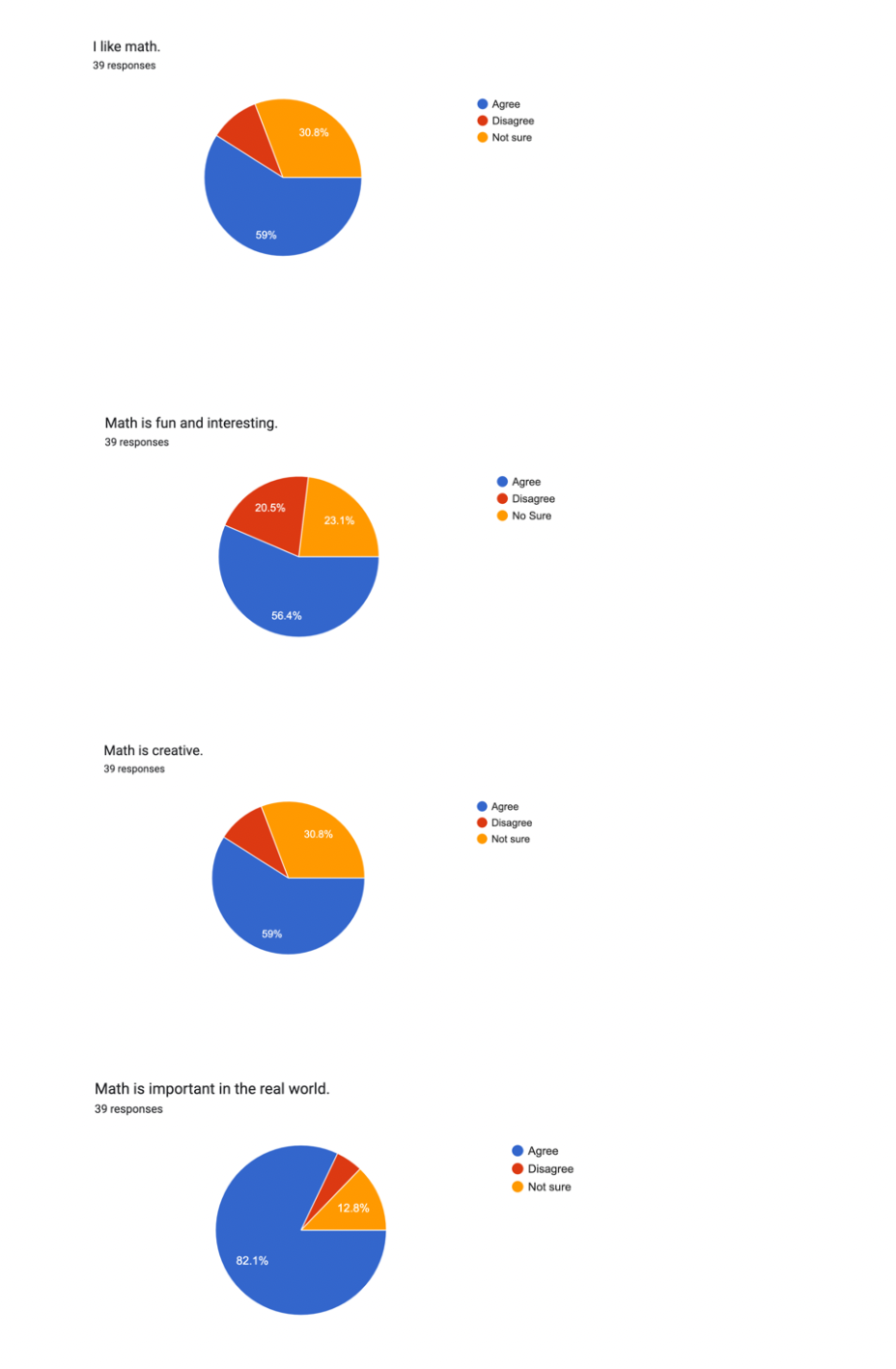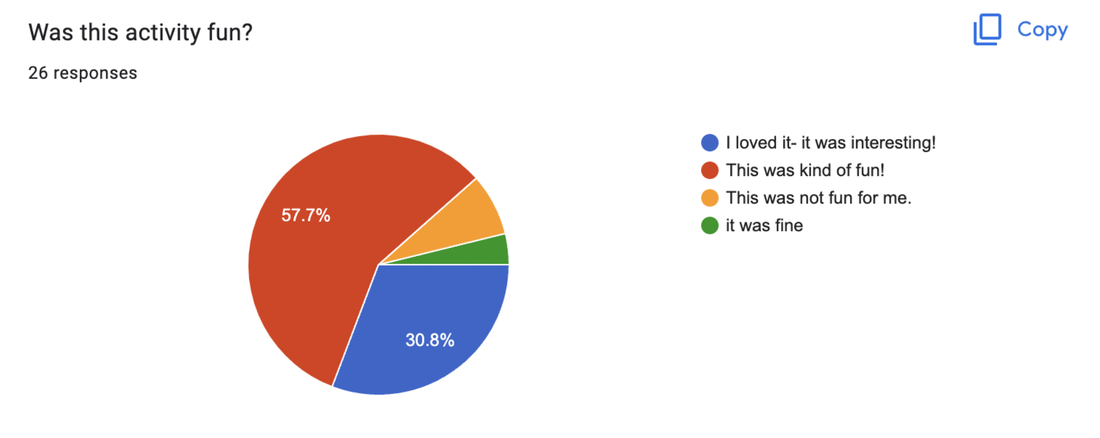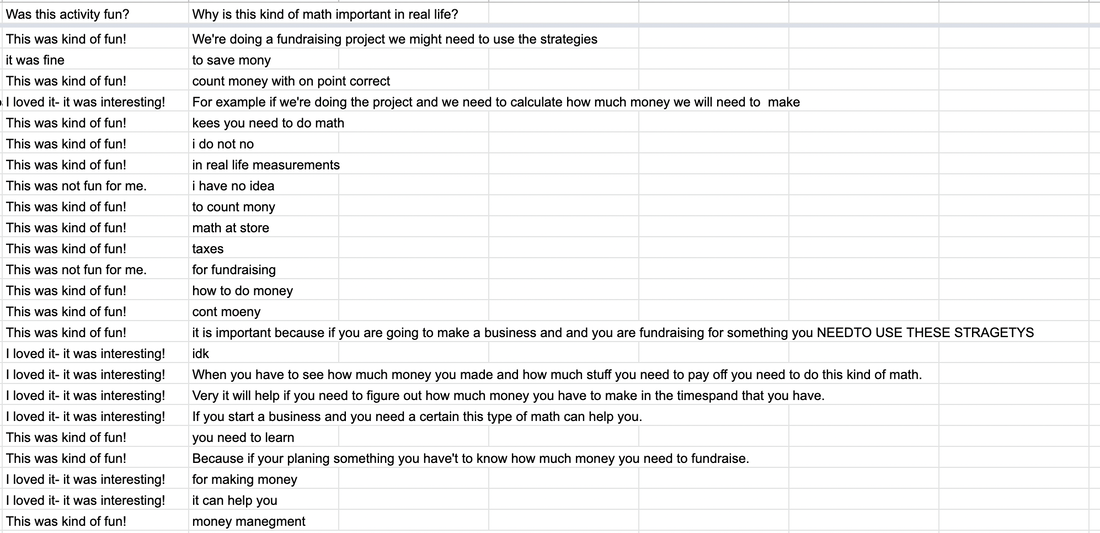Research Theme - Exploring Inquiry-Based Mathematics
Goals |
Part 1: PlanningEquity Goal:
How can we build students’ confidence in their mathematical abilities so that they are engaged in culturally-relevant, open-ended tasks that further their mathematical creativity, produce joy and interest while allowing them to make real world connections? Content Understanding Goal: Students will illustrate their understanding of open-ended arrays and/or area models to solve multi-digit multiplication problems. |
Research BaseClick to set custom HTML
|
Throughout our lesson study planning phase, we did research on: mathematics in project-based learning, culturally-relevant mathematical tasks, student agency, and information-processing in the brain. As a lesson study group, we unpacked each reading and used the main ideas to inform the planning of our lesson. Some of those main ideas include:
PDSA Cycle 1 (videos for Act 1 and Act 3 are to the left)
Lesson Hypothesis If we, as teachers, engage students in culturally relevant open-ended mathematical tasks while students are making sense of the relationship between open ended arrays and area to solve multi-digit multiplication problems, then students will improve their development of their mathematical creativity and agency resulting in students increased confidence to engage in the lesson and share their thinking. |
|
(Above): These are the results of my class and their thoughts about mathematics before we began the lesson study cycle. Overall, students showed their interest in math. However, when discussed with focal students individually, they expressed how they did not know how math was used in the real world nor did they find creativity in mathematical concepts.
|
(Above): This was the result of the research lesson. You will see students' responses from the host classroom in the exit ticket above. Only one of the questions was multiple choice and the other two questions were short responses. The questions included:
- What did you learn from this activity? - Was this activity fun? (seen in picture) - Why is this kind of math important in real life? |
Part 2: How it Went
Observations & Student Work Examples(To the right): You will see students' recording sheets from the research lesson. These include their noticings and wonderings at the beginning of the lesson (Act 1), their estimation and main question (Act 2), and the strategies they used to solve the problem (Act 3).
(Below): You will see the observation notes that were taken by the other team members Observation notes include:
|
Overall, our research lesson went well. Students were engaged in the learning and curious about how they were going to fundraise enough money to go on their fieldwork to the Getty Museum in LA. All 28 students participated during the activity, whether it was whole-group, individual, or partner work. Below you will find examples of recording sheets from students as well as observation notes that were taken by the other three team members who were not the host teacher.
|
Reflection
Completing this lesson study cycle was a valuable experience that provided me with many takeaways that will serve as a foundational aspect of my practice as a teacher. While these are all things I am continuing to practice to strengthen my teaching, the next step is to provide more ways for students to engage in mathematical tasks that are relevant to their everyday life. I noticed a positive change in students’ actions and behaviors when we did the mathematical task with food. I would like to continue using food as an access point for all of my students to make those connections to math. Another aspect I want to continue exploring is providing spaciousness for my students to discuss amongst themselves and build a community of practice through collaboration especially during math activities. Also, I want to make sure that I am allocating time for students to work independently and then follow with partner or group work after trying it on their own. Nevertheless, I will continue to provide spaciousness for students to collaborate and share their strategies during mathematics instruction.



